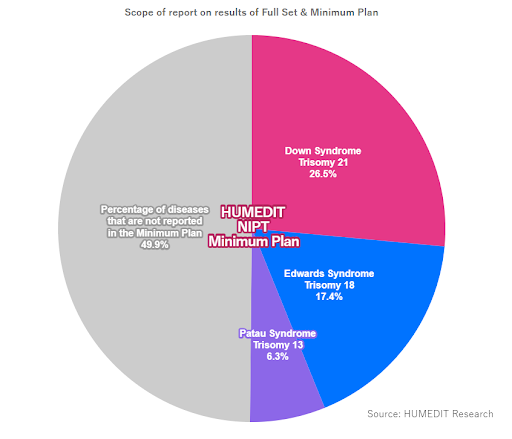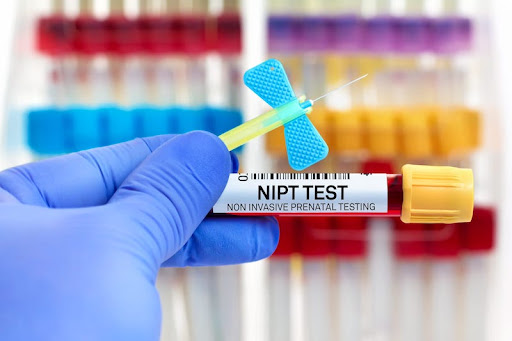
What is NIPT?
Non-invasive prenatal testing (NIPT) is a type of screening test that uses a small blood sample from the mother to evaluate the risk of certain genetic conditions in the developing fetus without the need for invasive procedures such as amniocentesis or chorionic villus sampling. Traditional screening methods include sonographic and maternal serum biochemical markers, which carry a risk of false positives and invasive procedures. The detection rates for the second trimester serum test, the first trimester combined test, and the coordinated first and second trimester screening test are about 60%, 90%, and 95%, respectively, with a positive predictive value of 1:15 to 1:30. There is a need for a better screening or diagnostic test with less risk. Non-invasive prenatal testing (NIPT) is generally considered a safe procedure with very low risks to both the mother and fetus. NIPT involves a simple blood draw from the mother, and there is no risk of harm to the fetus as the procedure is non-invasive. However, like any medical test, there is a small chance of false positive or false negative results, and some ethical and social concerns have been raised about the use of NIPT. NIPT should be discussed with a healthcare professional to make an informed choice.
How is NIPT performed?
Non-invasive prenatal testing (NIPT) is a screening test that can be performed as early as 9 to 10 weeks into a pregnancy. Here are the general steps involved in NIPT:
1. Blood sample
A blood sample is taken from the pregnant woman. This is usually done at a clinic or laboratory.

2. cfDNA extraction
The maternal plasma is separated from the blood cells, and cell-free DNA (cfDNA) is extracted. This cfDNA includes fragments of DNA from the fetus, which are present in the mother’s blood.
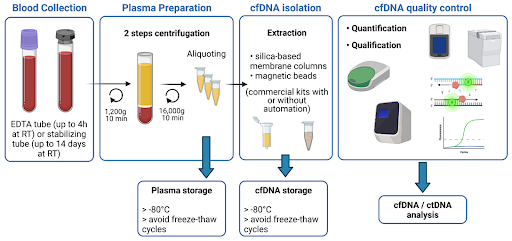
3. DNA sequencing
The cfDNA is sequenced using specialized equipment that can detect and count the number of DNA fragments from each chromosome.

4. Data analysis
This involves separating the extracted DNA into smaller fragments and sequencing them. This process is performed using advanced sequencing technologies that are capable of generating large amounts of sequencing data quickly and accurately. There are two main sequencing approaches used in NIPT: targeted sequencing and whole-genome sequencing. In targeted sequencing, only specific regions of the chromosomes of interest are sequenced, while in whole-genome sequencing, the entire genome is sequenced. Targeted sequencing is typically faster and more cost-effective than whole-genome sequencing, but it may miss certain types of genetic variations.
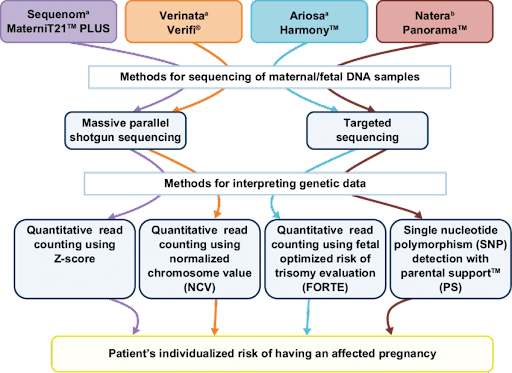
5. Results
After sequencing, the resulting data is analyzed using bioinformatic tools to determine the fetal chromosomal status. The analysis typically involves comparing the sequencing data to a reference genome and assessing the relative amounts of DNA from each chromosome to detect any chromosomal abnormalities. The results are usually reported as a probability or risk score for the presence of a particular chromosomal abnormality. The test results are usually reported as a probability or risk score for certain chromosomal abnormalities, such as Down syndrome, Edwards syndrome, or Patau syndrome. The results may also indicate the sex of the fetus.
What are the advantages of NIPT?
The main advantages of NIPT include its non-invasiveness, high accuracy in detecting chromosomal abnormalities, early detection of potential issues, the reduced need for invasive testing, and the peace of mind it can provide to expecting parents. NIPT is a low-risk and simple procedure that can provide more information about the health of the fetus, which can help parents make informed decisions about their pregnancy and childbirth. Overall, NIPT can reduce stress, anxiety, and uncertainty associated with
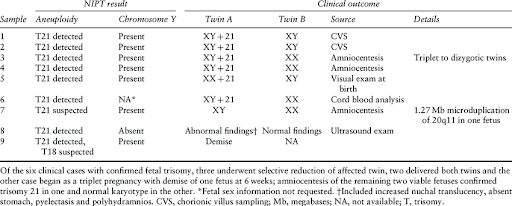
potential health issues during pregnancy and provide more confidence and reassurance to expecting parents. To be precise, these are the advantages of NIPT:
- This has dramatically reduced the number of unnecessary diagnostic tests, such as chorionic villus sampling (CVS) or amniocentesis, which carry around a 1% risk of miscarriage.2
- NIPT is much more accurate than the Medicare-funded first trimester screening (CFTS).2
- NIPT is more than 99% accurate (with a 0.2% false positive rate), while CFTS is only around 90% accurate (with a 5% false positive rate).2
- You can find out the sex sooner. With a simple blood test, you can find out the sex of your baby at 10 weeks, instead of waiting for an ultrasound at around 16 to 20 weeks.
Where can we avail NIPT?
Humedit offers test plans for NIPT; they have a full set plan, a light plan, and a minimum plan. You can visit their website here: https://humedit.com/nipt/ph or just type Humedit Nipt and the first website that will appear is their page. On their page, they explain in detail what NIPT is. They explain the possible results and the basis of the results. You can also inquire through their website.
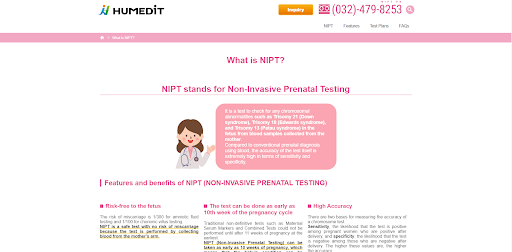
What are the top NIPT testing services here in the Philippines
Here is the list of top hospitals that offer NIPT testing here in the Philippines:
1. Hi-Precision Diagnostics
Non-invasive prenatal test that determines baby’s gender as early as 8 weeks gestation with an accurate rate of 99.5% upon simple blood draw, wait till 14 days for the result. It’s simple and convenient with a price range of P7500.

2. Biotech Philippines
From a simple blood draw as early as 10 weeks into your pregnancy, NICE® screens for the most common chromosomal abnormalities that can affect your developing a baby’s future. This test is done with little or no risk to your pregnancy. Biotech claims to have a safe and non-invasive test, early screening, Various screening panels available to detect genetic conditions, Uses Whole Genome Sequencing approach that reads millions of gene sequences to ensure comprehensive coverage with

more than 99% accuracy, Delivers critical information as definitive results that don’t rely on ambiguous numerical risk scores.
3. Humedit
Humedit offers 3 sets of plan, full Set plan examines the total number of chromosomes and all autosomal whole region partial deletions and duplications of disease. We will identify syndromes for 49 known types, deletion and duplication sites in other regions will also be reported, gender can also be identified.
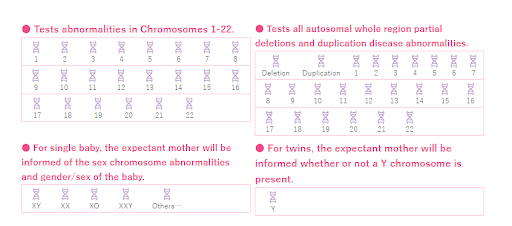
The Light Set Plan examined for abnormalities in chromosomes 21, 18, and 13, as well as sex chromosomes.
Chromosomes 21, 18, and 13 will be tested for Patau Syndrome, Edwards Syndrome, and Down Syndrome, which are among the most frequent congenital diseases caused by changes in the number of autosomal chromosomes, which are 22 pairs of chromosomes (44 chromosomes). For single fetuses, a sex chromosome condition test is performed, and for twins, a test is performed to determine whether or not a Y chromosome is present.
The Minimum Plan examined for abnormalities in chromosomes 21, 18, and 13. This is the same testing performed at accredited facilities.
They also have graphs that show the scope of reports on the results of these plans.
